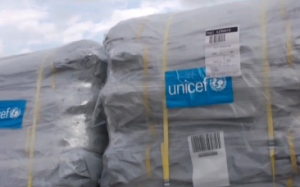
MAY 1 (Reuters) — The devastating earthquake in Nepal has drawn high attention from all over the world and several of the UN agencies are offering their help for its recovery.
In the past two days, the World Food Program and its affiliate corporations donated over 100 tons of food to the worst-hit districts while the UN Children’s Fund delivered nearly 30 tons of supplies, including tents, water purification tablets, and first aid and hygiene kits.
Besides, the World Health Organization has stepped up its efforts to deliver medical relief to those living outside the Kathmandu valley, with a major stress on reaching the injured and preventing the outbreaks of disease.
A staff named Lowson from the Red Society of Nepal said epidemic prevention stands as a big problem in the disaster areas. “It faces a high risk of outbreaks, because the environment here has been polluted and people cannot have clean water. Though the government has given out medicine to them, many of them don’t know how to take it properly,” he said.
The Office for the Coordination of Humanitarian Affairs(OCHA) reported inaccessibility to the remote disaster areas, noting the lack of helicopters, poor communication and security concerns remain the main challenges in delivering relief.
On Thursday, UN Under-Secretary-General for Humanitarian Affair Valerie Amos arrived in the country to assess the situation as his three-day trip would focus on coordination of the rescue operation.
On April 25, a 8.1 magnitude earthquake,the country’s biggest in 80 years, shook Nepal, killing thousands and leaving some 3.5 million in bad need of food assistance. In particular, many millions in the country’s Western and Central Regions, including its largest cities Kathmandu and Pokhara, were seriously affected.








